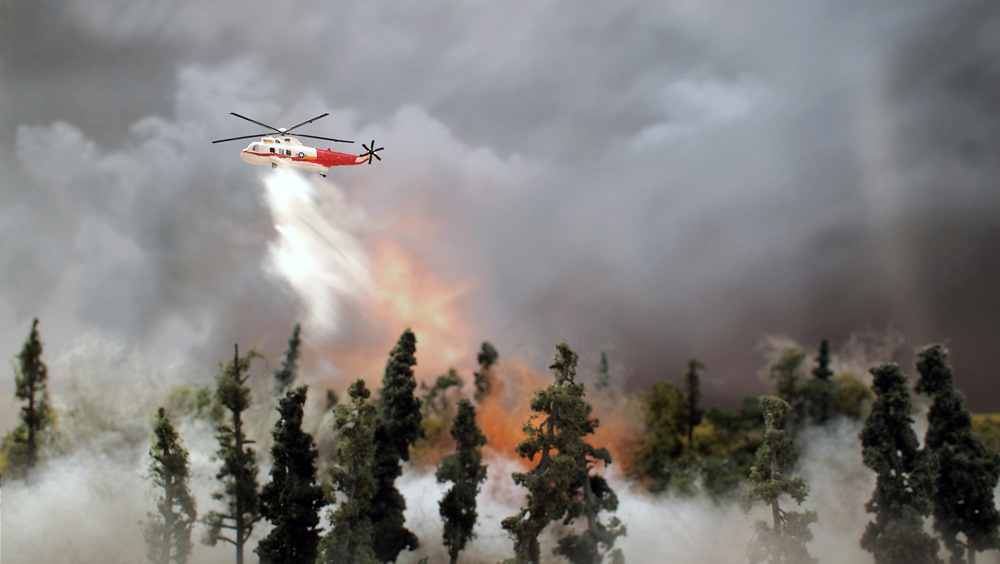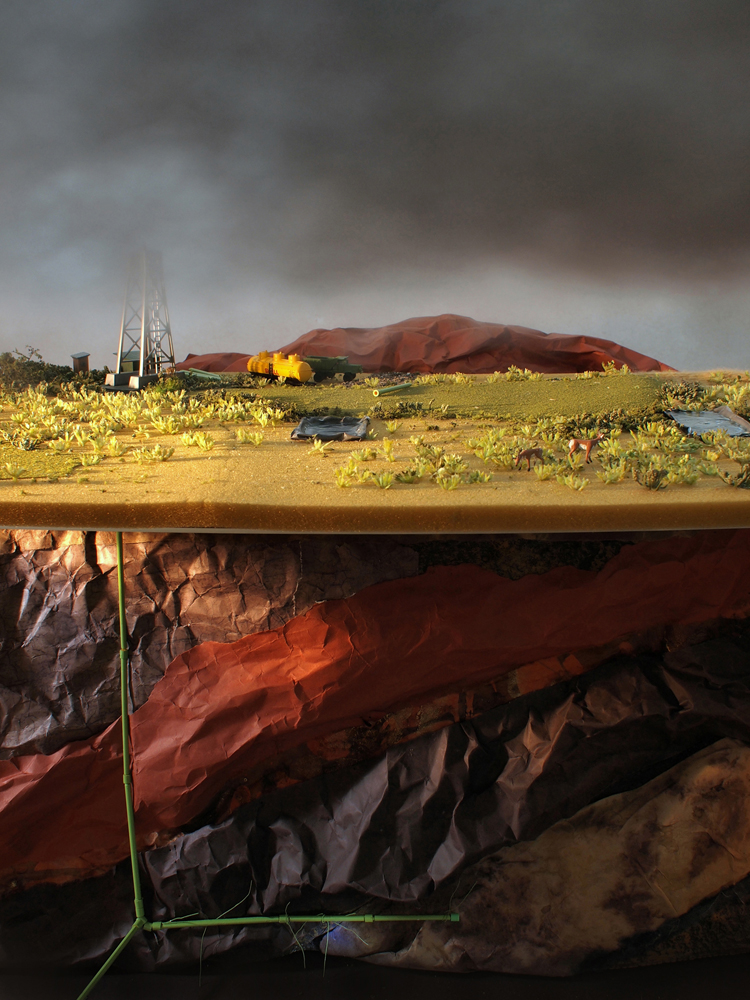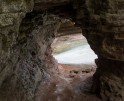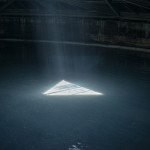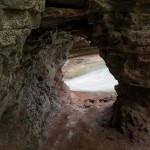Lori Kella: The States Project: Ohio
Lori Kella has said that in childhood she was a “maker of stuff” such as dioramas and dollhouses; she was fascinated by the dioramas she saw at natural history museums, especially those with cutaways to show the earth simultaneously both above and below ground. As she got older, Kella became interested in how these “little worlds” she had loved were constructed. Now an adult and a skilled and accomplished photographer, Kella approaches photography as “a maker” in much the same way she was as a child. Her work “explores historical, environmental and personal connections to the land” and, as in childhood, she makes “tabletop dioramas out of everyday materials such as paper, soap and wool, crafting these fabrications as an elaborate still life meant only for the camera’s lens.”
Kella’s miniature tableaus are indelible not only because of their beauty but because viewers are taken back to their own childhoods, to grade-school field trips and handmade dioramas. Her “pure fictions” – vistas of mountains, meadows and gently rolling hills, made with unremarkable materials and sometimes including store-bought HO scale people and animals – are not intended to be seen as realistic landscapes. Confronting an uncertain future because of climate change, global migration and civilization’s sprawling, unending encroachment into unspoiled wilderness, Kella fabricates and preserves in photographs her tabletop tableaus to gain a sense of control “that we don’t have in real life.”
There is expressive purity in Kella’s work because of the total absence of artifice or pretense. The elegantly constructed mountains in her project “The Seven Summits,” obviously and unabashedly made with folded paper and at times detailed with dripping paint, are unique counterpoints to the Western landscape photography of Ansel Adams, Edward Weston and Laura Gilpin. Adams’s and Weston’s pictures are examples of the sort of technical photographic perfection that Kella has rejected. But those famous photographs are part of Kella’s working subtext. It’s a relief to revel in the beauty of her imperfect, hand-made landscapes, admirable precisely because of their rejection of the unrealistic, romanticized photographs of practitioners like Adams, Gilpin and Weston, among many others. Instead, Kella identifies with the unembellished and sometimes socially conscious work of the photographers in “New Topographics: Photographs of a Man-Altered Landscape.”
Curiously, Kella’s artificial, constructed-to-be-photographed tableaus do share common traits with Adams’s and Gilpin’s traditional, romantic photographic landscapes because of their beauty and exquisite structural forms. But Kella also shares the sociological and, at times, polemical approaches of some of the against-the-grain photographers in the “New Topographics” movement; that Kella’s photographs share commonalities with such radically different kinds of photographers speaks to the sophistication and intellectuality of her enduring work.
Lori Kella was born in St. Joseph Michigan in 1974. She received a BFA from the Cleveland Institute of Art, and her MFA from Cornell University in 2001. Kella has exhibited in prestigious venues such as Galerie Drei and the Rathuas Galerie in Dresden Germany, The Print Center in Philadelphia, Site: Brooklyn in NY, MOCA Cleveland, The Cleveland Museum of Art, Artspace in Raleigh, NC, Target Gallery in Alexandria, VA, and William Busta Gallery in Cleveland, OH. Recently her work was featured in Scale3 at The Cleveland Print Room. This exhibition showcased 14 large-scale photographs depicting the Seven Summits as a metaphor for artistic triumph and failure. A selection of this work was also included in the exhibition Serial Intent, at the Akron Art Museum. Lori Kella has received four OAC Individual Fellowships Awards, a full fellowship to attend Vermont Studio Center, and a Creative Workforce Fellowship from the Community Partnership for Arts and Culture & Cuyahoga Arts and Culture. Lori Kella lives in Cleveland, OH and she is currently a Visiting Assistant Professor at Oberlin College and a part-time Professor at Kent State University’s School of Art.
In my photography I explore historical, environmental, and personal connections to the land. Typically, I build tabletop dioramas out of everyday materials such as paper, soap, and wool, crafting these fabrications as an elaborate still life meant only for the camera’s lens. Once constructed, I use lighting to dramatically transform these tableaus, bringing to the surface hidden truths that belie our understanding of the natural world; for the images unfolding in front of the camera are an amalgamation of familiar places, unexplored wilderness, and pure fiction. It is this visual tension, the uncanny and artificial nature of the photographs, that calls into question the permanence of our surroundings and hints at the dramatic shifts our environment is undergoing.
Though my photographs explore a range of topics from climate change to global migration, they all seek to analyze our complex relationship with the land we inhabit. Looking West examines the impact of hydraulic fracturing on public lands, and was inspired by the pristine Wyoming wilderness, which rests in contrast with the often destructive and clandestine nature of the fracking industry. These photographs often take the viewer below the surface to a fantastic and unreal network of underground pipes and reservoirs. Like museum displays and cutaway diagrams, these images show what is concealed beneath the surface, simultaneously revealing the vast wilderness along the horizon, and a strange, hidden geology that is omnipresent below ground. The photographs highlight contradictions, and in doing so, reconsider the romanticized history of exploration.
Similarly the photographs in Building the Mountains bring the artificiality of the landscape into the foreground, as the structures used to create the mountains are no longer hidden, but become exoskeletons shifting and expanding to articulate a hybrid space that reflects both the natural world and the array of simulacra invading it. The photographs oscillate between a fragile network near collapse and the precise computer generated models that they reference, illustrating a longing for something that does not exist. The photographs conjure the beauty and seduction of mythical and remote environments while acknowledging that these vistas are fragile and transitory, and perhaps an unreal expectation.- Lori Kella
Posts on Lenscratch may not be reproduced without the permission of the Lenscratch staff and the photographer.
Recommended
-
One Year Later: Anna RottyJuly 18th, 2024
-
Julianne Clark: After MaxineJuly 3rd, 2024
-
Jaclyn Wright: High Visibility (Blaze Orange)June 16th, 2024
-
In Memoriam: Wayne Swanson: From the WorkshopJune 7th, 2024













